multivitamin support
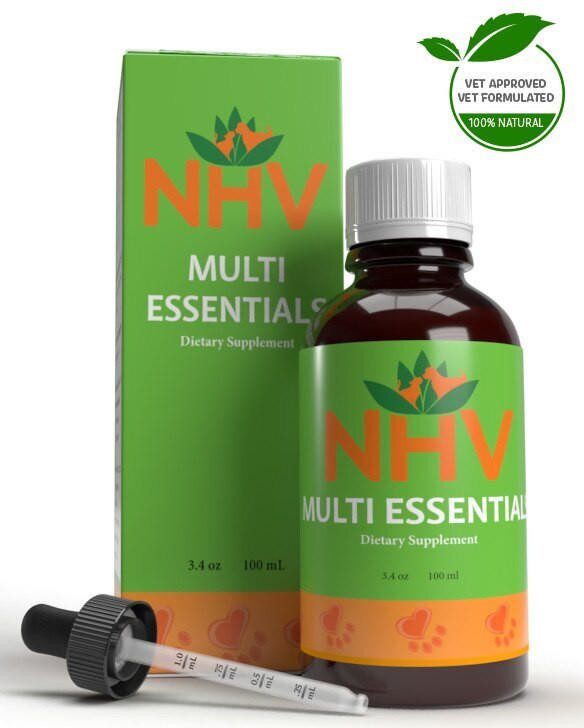
free shipping over $100 (USA & Canada)
1-877-937-4372 the pet expert hotline
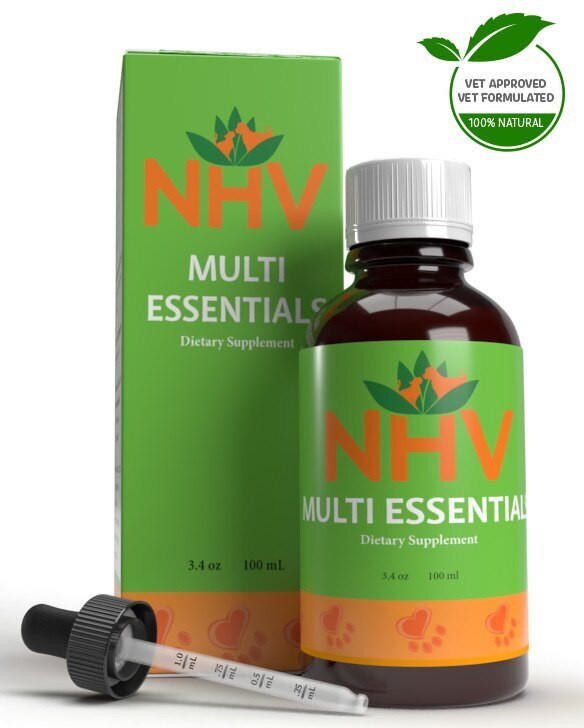
Herbal Digestive Aid, Energy Booster, and Multivitamin for Dogs

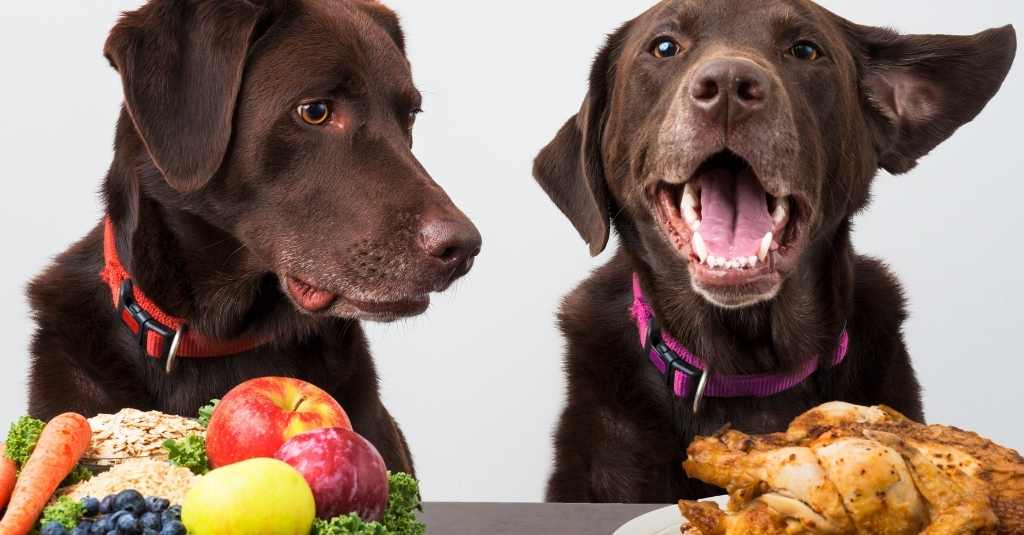
Unlike popular opinion, the best diet for your new friend will not be one that’s popular with other dogs and cats around you, but it will be one that’s picked according to your pet’s age, health condition, breed, weight, etc.
A puppy will need a diet with slightly high levels of protein, this will give your little one a lot of energy for growing healthy. On the other hand, if you adopt a senior pet, the pet will need a slightly low diet in proteins to protect the kidneys.
Introduce your pet to the new diet slowly, transitioning her/him into it by introducing a little more of it each day.
When we bring a new pet home, we are really excited to introduce them to lots of yummy treats from the pet store and the food that your veterinarian recommended. But remember not to change your pet’s diet right away. Ask the shelter or the previous owner what your pet has been eating and bring some of it along. Introduce your pet to the new diet slowly, transitioning her/him into it by introducing a little more of it each day.
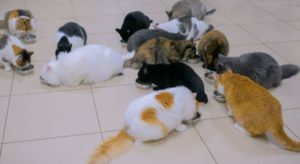
Their body needs time to recognize the new ingredients offered. They can have diarrhea, vomiting, or allergic reactions or they might not like the new diet right away. The transition time will depend on the diet chosen and the animal as well. It can vary from a few days to a month.
There are so many options out there when it comes to cat and dog food. I have heard that more and more grocery aisles are getting added to cater to our pets’ food needs each year. How will you decide which one to pick for your new rescue? Start with consulting your veterinarian. As a veterinarian and pet parent myself, I would like to give you some idea of everything that’s out there.
The difference between dry dog food and wet food is the percentage of water content in these formulations. For example, dry kibble tends to have a moisture content of between 6 to 10%, semi-moist foods between 15 to 30 %, and wet foods around 75%.
Dry food is convenient to handle and the store has a longer shelf life and has lots of market variety. Considering the amount consumed, it is also more economical. In addition, during the meal it helps clean their teeth, avoiding the accumulation of tartar.
The disadvantage is that for some cats or dogs it may not be as attractive. Pets with diseases that affect their sense of smell may show no interest in dry food. It is also not ideal for older pets, or pets with some tooth loss.
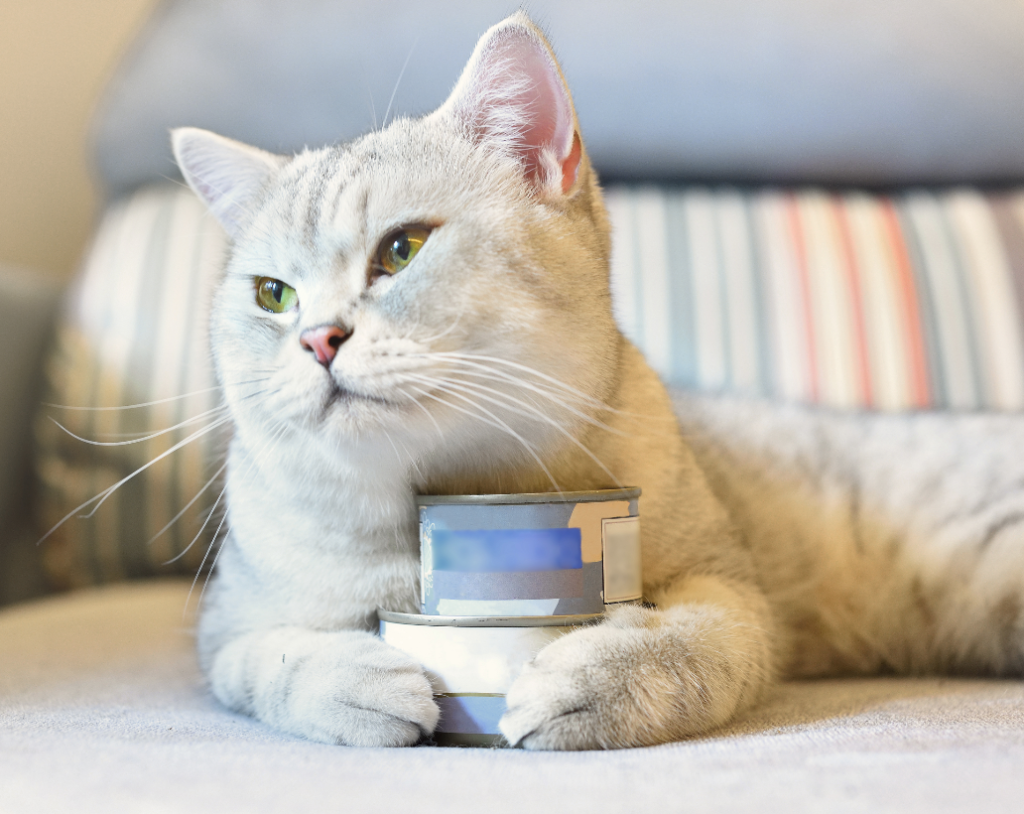
The great advantage of wet food is its palatability. That is, the taste and texture are much more inviting, encouraging the pet to eat the entire portion at the same time. As a result, wet food will not be exposed in the feeder or bowls all day, reducing the risk of contamination. Another huge plus is that the pet will ingest more water! Water is helpful for the urinary tract as it can decrease the formation of urinary calculi.
You might want to consider combining both together in the same meal or divide meals between them. If you are traveling you might not be able to carry wet food or leave a wet food dispenser with the sitter. If your pet is old you might not want to give your toothless pet dry crunchy kibble. Introducing wet food to a picky senior pet will be quite a struggle. That’s why it’s important to get your pet to like both kinds from the start.
Dogs and cats are carnivorous/omnivorous, and their anatomical characteristics exhibit their dietary needs. Just think about the physical characteristics of cats and dogs:
– Sensory organs designed to locate prey
– Musculoskeletal system adapted to capture
– Pointed teeth for tearing tissues
– Short gastrointestinal tract with digestive enzymes
– Different microorganism population than herbivores
When a carnivore eats a vegan diet, just as when an herbivore eats a meat diet, health problems are inevitable. Carnivores that receive only vegetarian diets do not usually live long and healthy lives. They may develop lifelong degenerative medical conditions.
Protein deficient pets can go into catabolism – they use the protein in their muscles to generate energy, which can lead them to a severe state of malnutrition.
Not enough meat in their diets can also lead to taurine deficiency. While most cat foods account for the necessary taurine levels, many pet owners are unaware that some dog breeds, such as large breeds and cockers, also need taurine in their diet. These breeds are prone to developing dilated cardiomyopathy, a serious disorder in which the heart muscle loses its contraction force to pump blood.
Some pet experts agree that though dogs might survive on a vegan diet, they also agree that dogs will not thrive on a vegan diet. Cats, being obligatory carnivores, will not be able to survive on a vegan diet. This type of diet requires extra attention to make it wholesome and balanced.
Dehydrated pet food is made by removing all moisture using a drying process. The dehydration process makes the ingredients lose some nutrients. However, the freeze-dried process is different from the dehydration process, though it also removes moisture from the food, in freeze-drying the food is frozen and then the surrounding air pressure is lowered to encourage the moisture in the food to evaporate. Freeze-drying causes less damage to the food but there can be some other effects.

Both types of foods are easy to feed. They are lightweight and take little space. There still isn’t enough research done on these foods, so I would recommend that pet owners ensure these foods are balanced for their pet’s needs and complimented with some wet snacks.
Grain-free dog foods basically contain meat-based ingredients like fish, chicken, lamb, beef, and turkey, along with carbohydrates from non-grain foods like vegetables. This diet can be recommended to pets with food intolerances to certain types of grains.
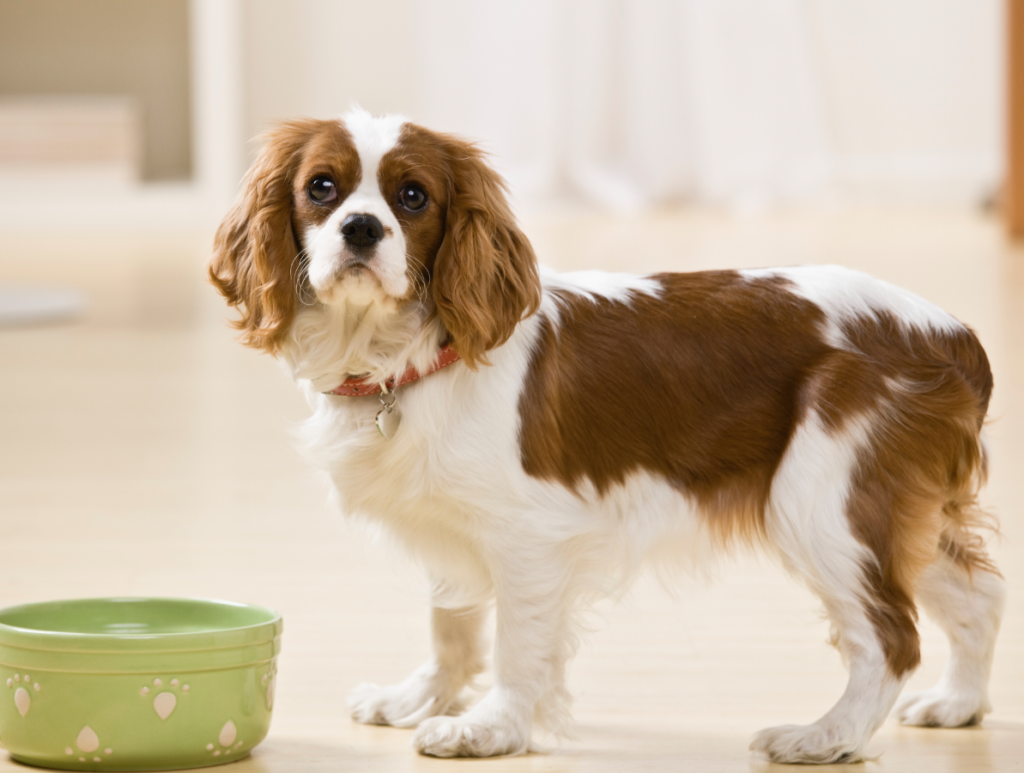
The U.S. Food and Drug Administration (FDA) recently announced that it is investigating a link between grain-free dog foods and dilated cardiomyopathy. In all cases being investigated, the dogs ate grain-free dog food for months to years.
Most veterinarians would agree that unless the pet is allergic to grains, there is no reason why grains should be avoided as an ingredient. They are good for the heart, they add fiber and digestion support to the bowl and they also help provide energy.
A Raw diet tries to mimic the diet of wild dogs and cats as closely as possible. The concept is that such a “natural” diet must be better for pets than processed food. However, the pets that live in our homes are no longer like their wild cousins.
A raw food diet may seem to be more natural, but it increases the risk of bacterial infection and malnutrition, especially in pets that are fighting a serious disease. This diet may be suitable for some pets, however, it cannot be applied as a rule of thumb for all pets. There is also the risk of parasite transmission – for the pets and the others who share space with them. If you are determined to feed your pet a raw diet, then consider getting advice from an expert veterinarian nutritionist!
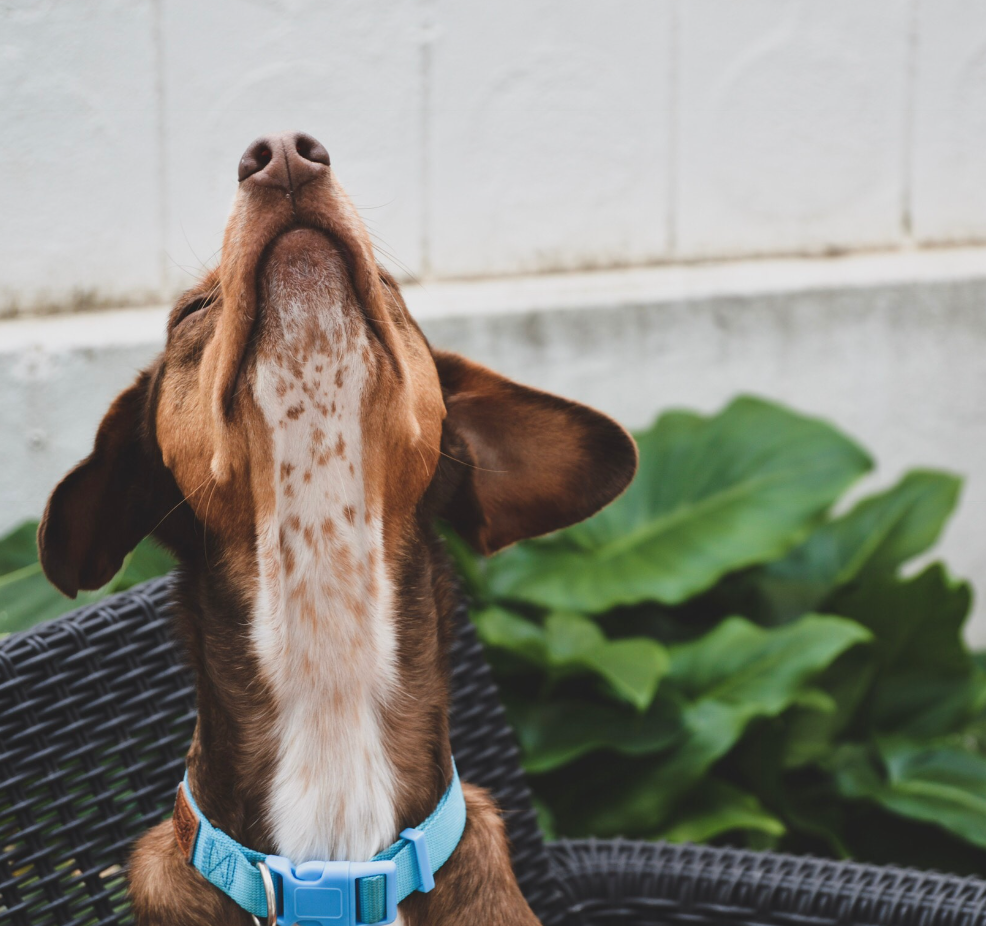
A cooked diet is considered safer than raw and can be offered safely even to pets with compromised immunity. A cooked diet is easy to digest and directly protects the health of the kidneys and urinary tract of the animal. Therefore, some pet owners can observe that upon starting their pets on home-cooked diets, the pet no longer needs to drink so much water throughout the day and in some cases, the pee becomes brighter. That said, a cooked diet needs to be balanced and supplemented for your pet’s particular needs.
In comparison to a raw diet, a cooked diet is a bit more laborious. You need to cook vegetables, carbohydrates, meats, eggs, fish, and organ meat. But all this cooking does make the food more palatable.
I hope my knowledge and experience can help you pick the best diet for your pet. If you are looking for more guidance then you can always reach out to our Pet Experts.
Before I wrap up this article, I would like to mention that while you are figuring the diet out, your pet may miss out on nutrients and minerals. Please consider starting her on a herbal multivitamin like NHV’s Multi Essentials to fill those dietary gaps. It can help stimulate metabolism, reduce fatigue and enhance nutrient absorption.
Whatever you are feeding your pet, pay special attention to dental health and weight management.
You can book a consult with Dr. Amanda here or get a customized diet plan, specially formulated for your pet’s needs.
multivitamin support

Herbal Digestive Aid, Energy Booster, and Multivitamin for Cats
buy 2 and save $3
3 month supply for a small to medium size pet
These multivitamins for cats will ensure your kitty (of any age) is getting an extra dose of minerals and vitamins for extra energy, vitality, and health.

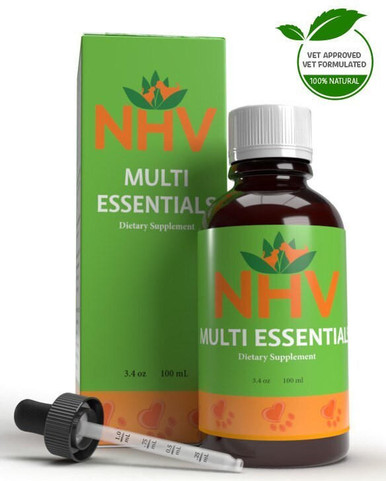
These multivitamins for cats will ensure your kitty (of any age) is getting an extra dose of minerals and vitamins for extra energy, vitality, and health.

The health benefits of multivitamins aren’t just for humans. Cats have many of the same nutrient needs as we do, and some need even more than others depending on their age and health.
A multivitamin supplies the vital nutrients your kitty needs to be healthy and to fight off potential health problems. Dr. Cook, DVM, CVA in her blog states that vitamins “help to regulate the body processes, protect the body from environmental toxins, and break down nutrients such as carbohydrates, proteins, and fats so the body can utilize them”.
The best way to give your cat vitamins and minerals are from whole food sources and not just isolated synthetic vitamins. NHV Multi Essentials contains a powerful blend of alfalfa, oat, dandelion, kelp, parsley, marshmallow, chickweed, stinging nettle, Asian ginseng, yucca and Oregon grape.
Health Benefits of NHV’s Multi-Essentials for Cats
With NHV’s multi vitamins for cats, you get a proprietary blend of all-natural ingredients that are organically grown and contain no artificial additives, preservatives, or coloring. Some of the health benefits include:
Multivitamins for cats will ensure your kitty is getting the proper nutrients that could be lacking due to daily stressors, a poor diet, and environmental toxins.
Signs of Vitamin Deficiency in Your Cat
Kitties Who’ve Benefited from NHV Multi Essentials
NHV multi vitamin for cats has helped thousands of pets around the world. Here are just a few of their stories:
DEALING WITH DIGESTIVE ISSUES: MICI THE CAT LOVES HIS VITAMINS NHV MULTI ESSENTIALS
HERBAL MULTIVITAMINS AND TURMERIC HELP CATS, OATMEAL AND MELISSA LIVE HAPPIER
CAN CATS WITH FELV LIVE A HEALTHY AND NORMAL LIFE?
If you have questions regarding holistic support including vitamin supplements for cats, ask an NHV expert because, at NHV, we want your cat to feel clawtastic naturally!
Select your pet's weight to determine the correct dose.
To be taken twice daily. Determine your pet’s weight and then use the easy chart below to determine the correct dose. This is the minimum dosage.
Pet's Weight Dosage
0 - 15 lb = 0.5 ml
16 - 30 lb = 1.0 ml
31 - 45 lb = 1.5 ml
46 - 60 lb = 2.0 ml
61 - 75 lb = 2.5 ml
Over 75 lb = 3.0 ml
How to Administer
Shake well before use. The easiest method is to use the dropper provide and places the drops into your pet’s food or favorite treat. You can also use the dropper and squirt directly into the pet’s mouth.
Some pets can be finicky, if this occurs consider hiding the drops in foods most pet’s love such as fish, chicken or yogurt or a favorite treat. If your pet only eats dry food then soak a few kibbles at feeding time.
For Best Results
Herbal dietary supplements are beneficial to the health and wellbeing of your pet and are safe for long-term use. Every pet responds to natural herbal supplements differently, therefore it is important to be consistent and administer the product daily. Supplements generally take two to four weeks to take effect, however this will vary from one animal to the next.
Product Storage
All NHV Natural Pet Products are pure herbal extracts and contain no artificial additives, preservatives or coloring. Shelf life after opening is 6 months and must be refrigerated after opening.
Cautions and Contraindications
Do not use Multi Essentials in pregnant or nursing animals. Speak to your vet before using our products. A second visit is recommended if your pet’s condition does not improve, or deteriorates after continued use of the supplements.
All information provided by NHV Natural Pet Products is for educational purposes only.
The health benefits of multivitamins aren’t just for humans. Cats have many of the same nutrient needs as we do, and some need even more than others depending on their age and health.
A multivitamin supplies the vital nutrients your kitty needs to be healthy and to fight off potential health problems. Dr. Cook, DVM, CVA in her blog states that vitamins “help to regulate the body processes, protect the body from environmental toxins, and break down nutrients such as carbohydrates, proteins, and fats so the body can utilize them”.
The best way to give your cat vitamins and minerals are from whole food sources and not just isolated synthetic vitamins. NHV Multi Essentials contains a powerful blend of alfalfa, oat, dandelion, kelp, parsley, marshmallow, chickweed, stinging nettle, Asian ginseng, yucca and Oregon grape.
Health Benefits of NHV’s Multi-Essentials for Cats
With NHV’s multi vitamins for cats, you get a proprietary blend of all-natural ingredients that are organically grown and contain no artificial additives, preservatives, or coloring. Some of the health benefits include:
Multivitamins for cats will ensure your kitty is getting the proper nutrients that could be lacking due to daily stressors, a poor diet, and environmental toxins.
Signs of Vitamin Deficiency in Your Cat
Kitties Who’ve Benefited from NHV Multi Essentials
NHV multi vitamin for cats has helped thousands of pets around the world. Here are just a few of their stories:
DEALING WITH DIGESTIVE ISSUES: MICI THE CAT LOVES HIS VITAMINS NHV MULTI ESSENTIALS
HERBAL MULTIVITAMINS AND TURMERIC HELP CATS, OATMEAL AND MELISSA LIVE HAPPIER
CAN CATS WITH FELV LIVE A HEALTHY AND NORMAL LIFE?
If you have questions regarding holistic support including vitamin supplements for cats, ask an NHV expert because, at NHV, we want your cat to feel clawtastic naturally!
Select your pet's weight to determine the correct dose.
To be taken twice daily. Determine your pet’s weight and then use the easy chart below to determine the correct dose. This is the minimum dosage.
Pet's Weight Dosage
0 - 15 lb = 0.5 ml
16 - 30 lb = 1.0 ml
31 - 45 lb = 1.5 ml
46 - 60 lb = 2.0 ml
61 - 75 lb = 2.5 ml
Over 75 lb = 3.0 ml
How to Administer
Shake well before use. The easiest method is to use the dropper provide and places the drops into your pet’s food or favorite treat. You can also use the dropper and squirt directly into the pet’s mouth.
Some pets can be finicky, if this occurs consider hiding the drops in foods most pet’s love such as fish, chicken or yogurt or a favorite treat. If your pet only eats dry food then soak a few kibbles at feeding time.
For Best Results
Herbal dietary supplements are beneficial to the health and wellbeing of your pet and are safe for long-term use. Every pet responds to natural herbal supplements differently, therefore it is important to be consistent and administer the product daily. Supplements generally take two to four weeks to take effect, however this will vary from one animal to the next.
Product Storage
All NHV Natural Pet Products are pure herbal extracts and contain no artificial additives, preservatives or coloring. Shelf life after opening is 6 months and must be refrigerated after opening.
Cautions and Contraindications
Do not use Multi Essentials in pregnant or nursing animals. Speak to your vet before using our products. A second visit is recommended if your pet’s condition does not improve, or deteriorates after continued use of the supplements.
All information provided by NHV Natural Pet Products is for educational purposes only.
multivitamin support

Herbal Digestive Aid, Energy Booster, and Multivitamin for Dogs
buy 2 and save $3
3 month supply for a small to medium size pet
NHV’s multivitamins for dogs targets the brain, stomach, major arteries, kidneys, and liver with a powerful blend of herbal support.


NHV’s multivitamins for dogs targets the brain, stomach, major arteries, kidneys, and liver with a powerful blend of herbal support.

Millions of people take multivitamins daily to support their health, and it only makes sense our canine companions can benefit just as much. This 100% natural plant-based liquid blend can help your dog with nutritional deficiencies.
Signs of Possible Vitamin Deficiency in Dogs
NHV’s Multi-Essentials are packed with herbs that are rich in vitamins and minerals. This vet-formulated blend is designed to benefit your dog’s health using all-natural organically grown herbs with no additives or preservatives.
Even if your pet is healthy, supplying a multivitamin is essential to maintain good health, and some pets need more vitamins and minerals than others. For more, read NHV’s blog, vet talk with Dr. Hillary Cook.
Benefits of NHV’s Multivitamins for Dogs
You can read NHV's blog about the importance of dog vitamin supplements. All pets can benefit from NHV’s Natural Pet Product, even small exotic pets.
If you have questions about plant-based supplements including our multivitamins for dogs, you can schedule a consultation with one of our highly trained holistic veterinarians, because, at NHV, total health and wellness for all pets is our top priority.

Select your pet's weight to determine the correct dose.
To be taken twice daily. Determine your pet’s weight and then use the easy chart below to determine the correct dose. This is the minimum dosage.
Pet's Weight Dosage
0 - 15 lb = 0.5 ml
16 - 30 lb = 1.0 ml
31 - 45 lb = 1.5 ml
46 - 60 lb = 2.0 ml
61 - 75 lb = 2.5 ml
Over 75 lb = 3.0 ml
How to Administer
Shake well before use. The easiest method is to use the dropper provide and places the drops into your pet’s food or favorite treat. You can also use the dropper and squirt directly into the pet’s mouth.
Some pets can be finicky, if this occurs consider hiding the drops in foods most pet’s love such as fish, chicken or yogurt or a favourite treat. If your pet only eats dry food then soak a few kibbles at feeding time.
For Best Results
Herbal dietary supplements are beneficial to the health and wellbeing of your pet and are safe for long-term use. Every pet responds to natural herbal supplements differently, therefore it is important to be consistent and administer the product daily. Supplements generally take two to four weeks to take effect, however this will vary from one animal to the next.
Product Storage
All NHV Natural Pet Products are pure herbal extracts and contain no artificial additives, preservatives or coloring. Shelf life after opening is 6 months and must be refrigerated after opening.
Cautions and Contraindications
Do not use Multi Essentials in pregnant or nursing animals. Speak to your vet before using our products. A second visit is recommended if your pet’s condition does not improve, or deteriorates after continued use of the supplements.
All information provided by NHV Natural Pet Products is for educational purposes only.
Millions of people take multivitamins daily to support their health, and it only makes sense our canine companions can benefit just as much. This 100% natural plant-based liquid blend can help your dog with nutritional deficiencies.
Signs of Possible Vitamin Deficiency in Dogs
NHV’s Multi-Essentials are packed with herbs that are rich in vitamins and minerals. This vet-formulated blend is designed to benefit your dog’s health using all-natural organically grown herbs with no additives or preservatives.
Even if your pet is healthy, supplying a multivitamin is essential to maintain good health, and some pets need more vitamins and minerals than others. For more, read NHV’s blog, vet talk with Dr. Hillary Cook.
Benefits of NHV’s Multivitamins for Dogs
You can read NHV's blog about the importance of dog vitamin supplements. All pets can benefit from NHV’s Natural Pet Product, even small exotic pets.
If you have questions about plant-based supplements including our multivitamins for dogs, you can schedule a consultation with one of our highly trained holistic veterinarians, because, at NHV, total health and wellness for all pets is our top priority.

Select your pet's weight to determine the correct dose.
To be taken twice daily. Determine your pet’s weight and then use the easy chart below to determine the correct dose. This is the minimum dosage.
Pet's Weight Dosage
0 - 15 lb = 0.5 ml
16 - 30 lb = 1.0 ml
31 - 45 lb = 1.5 ml
46 - 60 lb = 2.0 ml
61 - 75 lb = 2.5 ml
Over 75 lb = 3.0 ml
How to Administer
Shake well before use. The easiest method is to use the dropper provide and places the drops into your pet’s food or favorite treat. You can also use the dropper and squirt directly into the pet’s mouth.
Some pets can be finicky, if this occurs consider hiding the drops in foods most pet’s love such as fish, chicken or yogurt or a favourite treat. If your pet only eats dry food then soak a few kibbles at feeding time.
For Best Results
Herbal dietary supplements are beneficial to the health and wellbeing of your pet and are safe for long-term use. Every pet responds to natural herbal supplements differently, therefore it is important to be consistent and administer the product daily. Supplements generally take two to four weeks to take effect, however this will vary from one animal to the next.
Product Storage
All NHV Natural Pet Products are pure herbal extracts and contain no artificial additives, preservatives or coloring. Shelf life after opening is 6 months and must be refrigerated after opening.
Cautions and Contraindications
Do not use Multi Essentials in pregnant or nursing animals. Speak to your vet before using our products. A second visit is recommended if your pet’s condition does not improve, or deteriorates after continued use of the supplements.
All information provided by NHV Natural Pet Products is for educational purposes only.
diarrhea support
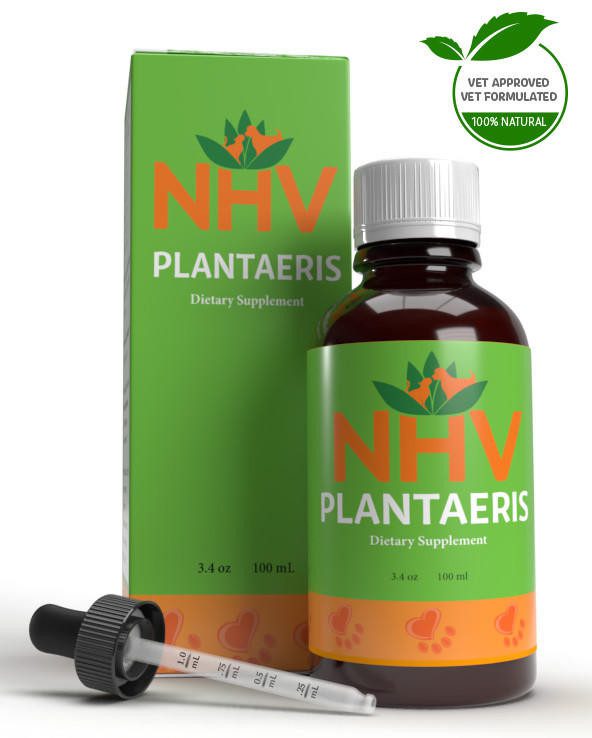
Natural relief to help your cat’s diarrhea and inflammatory bowel syndrome (IBS)
buy 2 and save $3
3 month supply for a small to medium size pet
Does your cat have diarrhea or loose stools? NHV Plantaeris is a natural vet-formulated supplement designed to gently help support normal bowel functions, while soothing and relieving spasms of the digestive tract.


Does your cat have diarrhea or loose stools? NHV Plantaeris is a natural vet-formulated supplement designed to gently help support normal bowel functions, while soothing and relieving spasms of the digestive tract.

Plantaeris is a gentle, natural vet-formulated supplement to help cat diarrhea. It is designed to help reduce symptoms of diarrhea and maintain normal bowel function. It also helps soothe and relieve spasms, and discomfort. Since this herbal formulation helps balance the body, it can be used on a longer-term basis if your cat suffers from frequent diarrhea (though it is vital to understand the underlying cause of diarrhea).
Diarrhea is a symptom of digestive disorders. In cats, it can be caused by inflammatory bowel disease, food allergies, parasites, or commonly an underlying condition, such as hyperthyroidism or kidney disease.
To help with cat diarrhea, make sure your pet is getting adequate water and nutrition as diarrhea can lead to weight loss, dehydration, vomiting, and lethargy. Remember that a cat can be eating the same food for years and still develop a food allergy to it. Talk to your vet to rule out any underlying conditions.
For days when your cat is suffering from acute diarrhea, the Plantaeris dosage may be safely doubled. You can then bring down the dosage to normal after the episode has passed. Try adding a bit of pumpkin to their diet to help bulk up stools.
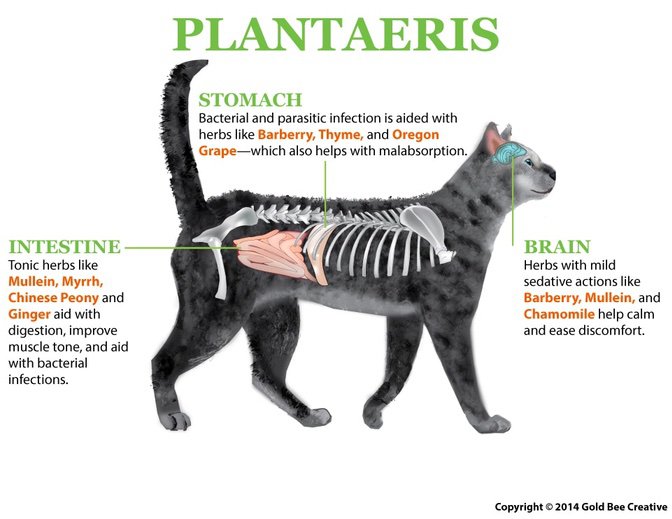
Barberry – Has traditionally been used to treat diarrhea, relieve stomach upset, and to reduce stomach acid.
Mullein – Soothes and lubricates tissues. Mullein’s medicinal properties help fight diarrhea-causing bacteria.
Bayberry – Contains tannins, resins, and gums that control bacterial infection.
Myrrh – Relieves spasms, inflammation, and digestive discomfort.
Thyme – Improves digestion and relaxes spasms. Thyme has traditionally been used to help expel gas, expel worms, and to help with IBD and colitis.
Chamomile – Relaxes the digestive system. It helps expel gas and helps reduce vomiting caused by IBD and is helpful with indigestion.
Chinese Peony – Reduces inflammation and relaxes spasms.
Ginger – Relieves discomfort and stimulates circulation. The enzymes in ginger encourage the production of gastric juices required for digestion. It helps reduce muscle contractions of the bowel, which helps eliminate waste without causing discomfort.
Oregon Grape – Helps relieve indigestion and malabsorption.
Select your pet's weight to determine the correct dose.
To be taken twice daily. Determine your pet’s weight and then use the easy chart below to determine the correct dose. This is the minimum dosage.
Pet's Weight Dosage
0 - 15 lb = 0.5 ml
16 - 30 lb = 1.0 ml
31 - 45 lb = 1.5 ml
46 - 60 lb = 2.0 ml
61 - 75 lb = 2.5 ml
Over 75 lb = 3.0 ml
How to Administer
Shake well before use. The easiest method is to use the dropper provided and place the drops into your pet’s food or favorite treat. You can also use the dropper and squirt directly into the pet’s mouth.
Some pets can be finicky. If this occurs consider hiding the drops in foods most pets love, such as fish, chicken, yogurt or a favorite treat. If your pet only eats dry food then soak a few kibbles at feeding time.
For Best Results
Herbal dietary supplements are beneficial to the health and wellbeing of your pet and are safe for long-term use. Every pet responds to natural herbal supplements differently, therefore it is important to be consistent and administer the product daily. Supplements generally take two to four weeks to take effect; however, this will vary from one animal to the next.
Product Storage
All NHV Natural Pet Products are pure herbal extracts and contain no artificial additives, preservatives or coloring. Shelf life after opening is 6 months and products must be refrigerated after opening.
Cautions and Contraindications
Do not use Plantaeris in pregnant or nursing animals. Speak to your vet before using our products. A second visit is recommended if your pet’s condition does not improve, or deteriorates after continued use of the supplements.
All information provided by NHV Natural Pet Products is for educational purposes only.
Plantaeris is a gentle, natural vet-formulated supplement to help cat diarrhea. It is designed to help reduce symptoms of diarrhea and maintain normal bowel function. It also helps soothe and relieve spasms, and discomfort. Since this herbal formulation helps balance the body, it can be used on a longer-term basis if your cat suffers from frequent diarrhea (though it is vital to understand the underlying cause of diarrhea).
Diarrhea is a symptom of digestive disorders. In cats, it can be caused by inflammatory bowel disease, food allergies, parasites, or commonly an underlying condition, such as hyperthyroidism or kidney disease.
To help with cat diarrhea, make sure your pet is getting adequate water and nutrition as diarrhea can lead to weight loss, dehydration, vomiting, and lethargy. Remember that a cat can be eating the same food for years and still develop a food allergy to it. Talk to your vet to rule out any underlying conditions.
For days when your cat is suffering from acute diarrhea, the Plantaeris dosage may be safely doubled. You can then bring down the dosage to normal after the episode has passed. Try adding a bit of pumpkin to their diet to help bulk up stools.

Barberry – Has traditionally been used to treat diarrhea, relieve stomach upset, and to reduce stomach acid.
Mullein – Soothes and lubricates tissues. Mullein’s medicinal properties help fight diarrhea-causing bacteria.
Bayberry – Contains tannins, resins, and gums that control bacterial infection.
Myrrh – Relieves spasms, inflammation, and digestive discomfort.
Thyme – Improves digestion and relaxes spasms. Thyme has traditionally been used to help expel gas, expel worms, and to help with IBD and colitis.
Chamomile – Relaxes the digestive system. It helps expel gas and helps reduce vomiting caused by IBD and is helpful with indigestion.
Chinese Peony – Reduces inflammation and relaxes spasms.
Ginger – Relieves discomfort and stimulates circulation. The enzymes in ginger encourage the production of gastric juices required for digestion. It helps reduce muscle contractions of the bowel, which helps eliminate waste without causing discomfort.
Oregon Grape – Helps relieve indigestion and malabsorption.
Select your pet's weight to determine the correct dose.
To be taken twice daily. Determine your pet’s weight and then use the easy chart below to determine the correct dose. This is the minimum dosage.
Pet's Weight Dosage
0 - 15 lb = 0.5 ml
16 - 30 lb = 1.0 ml
31 - 45 lb = 1.5 ml
46 - 60 lb = 2.0 ml
61 - 75 lb = 2.5 ml
Over 75 lb = 3.0 ml
How to Administer
Shake well before use. The easiest method is to use the dropper provided and place the drops into your pet’s food or favorite treat. You can also use the dropper and squirt directly into the pet’s mouth.
Some pets can be finicky. If this occurs consider hiding the drops in foods most pets love, such as fish, chicken, yogurt or a favorite treat. If your pet only eats dry food then soak a few kibbles at feeding time.
For Best Results
Herbal dietary supplements are beneficial to the health and wellbeing of your pet and are safe for long-term use. Every pet responds to natural herbal supplements differently, therefore it is important to be consistent and administer the product daily. Supplements generally take two to four weeks to take effect; however, this will vary from one animal to the next.
Product Storage
All NHV Natural Pet Products are pure herbal extracts and contain no artificial additives, preservatives or coloring. Shelf life after opening is 6 months and products must be refrigerated after opening.
Cautions and Contraindications
Do not use Plantaeris in pregnant or nursing animals. Speak to your vet before using our products. A second visit is recommended if your pet’s condition does not improve, or deteriorates after continued use of the supplements.
All information provided by NHV Natural Pet Products is for educational purposes only.
Published: August 9, 2019